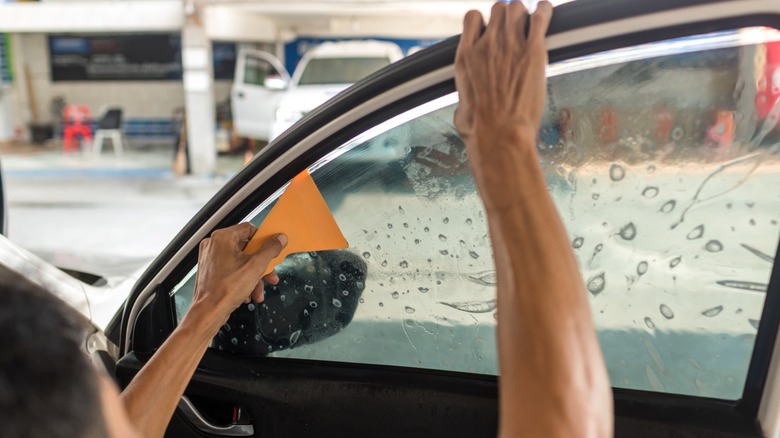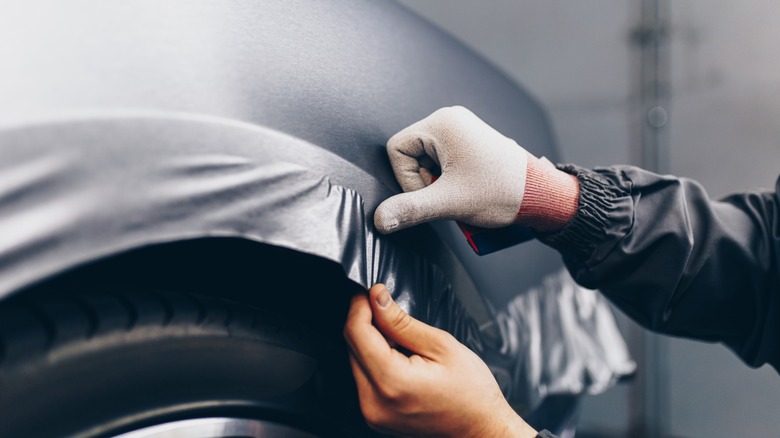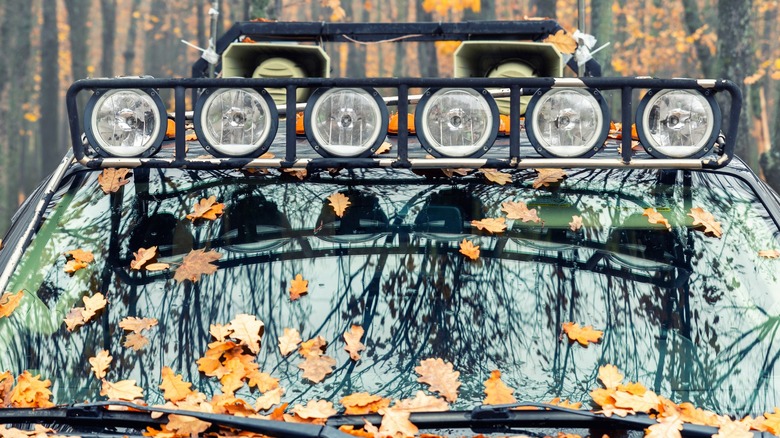7 Easy Ways To Upgrade Your Older Car
Many of us have conflicted feelings about car ownership. While having a car can offer a great deal of freedom and is also a necessity for living in most modern American cities, the experience can be occasionally stressful and often expensive. Furthermore, cars do not last forever without intervention. Repairs, rebuilds, taxes, and insurance all add to the cost of ownership in addition to the purchase price or monthly payments. For all these reasons, keeping an older car around — rather than committing to years of costly payments – can sometimes be an easier course of action.
You will most likely consider buying a new car if your current model is suffering from mechanical problems, particularly those expensive engine and transmission issues. With many cars it is not cost-effective to continue shelling out cash on continuous repairs. However, for those whose cars are mechanically sound with a good track record of reliability, upgrading them can extend their enjoyment. Upgrades can also help satisfy the itch to have an all new car.
The good news is that anyone who wants to explore ways to breathe new life into an old car has endless options for doing so. The level of difficulty runs the gamut and so do the expenses. For just a sampling of these options, here are seven easy ways to upgrade that old car.
Wheels and tires
The quickest way to alter your car's visual appeal begins on the ground. Tires and wheels are an integral part of any vehicle, and aftermarket wheel brands produce hundreds, if not thousands, of different wheels in many styles and sizes that can give your ride a fresh look. However, many considerations need to be evaluated to make the right choice, but a properly researched decision can yield impressive results.
Choosing the wrong wheels can affect the handling and safety of your car, making research paramount. Many models can accept larger wheels with appropriately sized tires, and this option can offer aesthetically pleasing results. However, adding weight to the wheels is detrimental to the ride, and oversized wheels can end up rubbing inside the wheel wells. Oversized tires can also make driving in snow more difficult, a concern for those living in colder climates. A trusted tire shop can help guide you through this process.
New wheels are an easy installation that most shops can do in an hour or so. The only difficulty is paying for them, as wheels can get very expensive. Super light racing wheels can cost thousands for a set, while lesser quality and heavier wheels may only get into the hundreds. Again, with proper research, you can definitely find something that will work for your car and budget. Just don't make a hasty decision, and this upgrade will work out just fine.
Window tint
If you have owned your car for some time and each summer you find yourself squinting from the sun's rays pounding through your windows, you need window tint. In fact, window tinting is perhaps the quickest and most painless way to improve comfort for summertime driving while also instantly transforming the look of your car.
Window tint offers many benefits. Dark windows make your car look more sophisticated while providing a level of privacy. This also increases security by obscuring the contents of the car. The most obvious benefit is blocking the sun while you drive, but with that comes a reduction in UV rays, preventing degradation of plastics and upholstery, and keeping them in better condition for the long term. The UV blocking also translates into a cooler interior. Getting into your car after it has been sitting in a hot parking lot for hours can be made much more pleasant with tinted windows.
Regardless of any benefit, it is crucial to learn the window tint laws of your jurisdiction before getting it for your car. Unfortunately, there are no standard codes nationwide and many of them can seem arbitrary and illogical. The film used to tint windows comes in a surprising array of options. Film is sold with a range of darkness levels, and the most common is a standard dark gray tint but others, such as metallics, are available. Furthermore, the films are made from a variety of materials, which affect the UV blocking and longevity of the film. Pricing ranges from a couple of hundred dollars to more than a thousand, and most cars can be done in a few hours.
Vehicle wrap
Another quick and easy way to upgrade your car with dramatic results is adding a vinyl vehicle wrap. This is a process and product that was originally developed as early as the 1920s but has only become feasible to offer to mainstream customers in the last couple of decades.
This upgrade is viable whether your car already has good paint or not. If the paint is damaged or deteriorated, a wrap could be an ideal choice. So long as the car is free of dents, rust, and other blemishes, you can have a shop apply a wrap. A technician will apply pieces of vinyl, cut specifically for your car, and then use a combination of moisture and heat to get the vinyl to shrink and conform to the body panels. When complete, a well-applied wrap should be indistinguishable from the paint. Finishes available include standard gloss or matte vinyl as well as carbon fiber, chrome, stainless steel, and metallic. Custom graphics can also be printed on panels.
The vinyl used for wraps comes from several suppliers with differing ranges in colors, durability, and price. Even though installation may not be as complex as painting, it is not necessarily cheaper. An ordinary wrap can range from $2,000 to $4,000, but special finishes can double that amount. Furthermore, complex and ultra-high-end car applications can carry an additional premium. Wraps are also completely reversible should you ever change your mind, although the high cost may deter frequent changes.
Lighting
For truck owners, nothing can add presence and make your truck stand out in a crowd like some accessory lighting. Not only does it add to the looks, but it also provides something with genuine utility. Car owners can also benefit from lighting upgrades. Fog lights, for example, are a common addition to cars that can provide a unique look with a highly beneficial function as well.
A huge array of light bars, spotlights, and floodlights can be purchased for trucks and off-road vehicles. Cars can also be fitted with fog lights or LED accent lighting and all older vehicles can have their headlights and signal lighting upgraded with modern LED bulbs. Some popular additions for cars are under glow light kits, which provide colored illumination emanating from the bottom of the chassis, aftermarket daytime running lights, and trunk lighting. Popular lighting for trucks includes LED light bars that run the width of the truck and can be installed on top of the cab or along the front bumper. Round flood lights are also popular on trucks and Jeeps.
For all older vehicles, LED lights can improve visibility for the driver and for the car itself, thanks to the increased brightness possible with this technology. Most standard bulbs are now available with a direct LED bulb replacement, while some applications, such as popular classic cars, may have LED light panels built with an OEM-style fitment. These options offer useful upgrades for any budget, and many are easy installs you can do yourself.
Audio system
Audio systems in new cars have come a very long way — even from where they were as recently as the '90s. Sound quality is good and the integration of accessory inputs and features such as subwoofers is much more common now than before. However, upgrades are still possible, even if your car has an audio system fully integrated into the dashboard.
Many older cars have a stereo system that can be easily removed and replaced with one of any number of aftermarket head units. These modern units have options to integrate with steering wheel controls, Bluetooth connections, and a range of screen sizes with Android Auto or Apple CarPlay built-in. Even if you want to keep the factory stereo, you have choices. Swapping the original speakers for new ones will improve the sound, and you can add an amplifier and subwoofer to increase the presence and bass output.
When planning for a car audio installation, the sky's the limit. A simple speaker exchange on most cars is a straightforward and simple job, while systems with multiple amplifiers, large subwoofers, and higher power demands can become complex and costly installations.
Alarm system
If you own an older car that still has a relatively decent amount of value in it, an alarm system might be the first thing you want to install. It would be especially wise to do so before adding other expensive options, such as amplifiers and subwoofers, to protect your investments. Furthermore, alarms these days are far more than an annoying blaring siren that often goes unnoticed in parking lots.
Car alarms have been common for decades, and the basic technology has not changed drastically over the years. However, there have been improvements and additions that expand functionality. Some of the basics include a function to disable the car from starting when armed, along with several different sensors to trigger an alarm when activated. These include shock sensors that detect vibration, glass break detectors, and voltage detectors that trigger an alarm when, for example, the dome lights come on.
Most alarms include some kind of siren. One-way alarms simply make noise to scare away would-be thieves, while two-way alarms come with a key fob that receives a signal in the event of alarm activation. The best alarms today feature fobs with LCD screens and integration with smartphones. If your car does not currently have a remote start, most new alarms can add that functionality, providing extra benefits. Alarm prices start below $100 for basic protection, with top alarm products going for around $500 to $1000, plus installation charges of up to $300. If you drive anything but an old beater, the security system is a worthwhile investment.
Leather upholstery
So your car is older but still mechanically sound and in good shape. However, the cloth seats are getting faded and a little threadbare in spots. That may be frustrating, but you certainly have options, such as treating yourself to new leather upholstery. This upgrade is quite common, and aftermarket leather kits have made it a relatively easy upgrade.
There are two options for having your seats covered in leather. The first option is to have a specialty automotive upholstery shop and have them custom cut, stitch, and install your seat coverings. This provides you wide latitude for customization and the opportunity to add custom colors, panels, stripes, and even embroidery. However, it is also costly and requires a craftsman to lay it out and put it together by hand. The alternative is an aftermarket leather kit. These can be done by less experienced technicians and are often much cheaper. The disadvantage is that you have no customization options, limited color selection, and they are only available for select models.
However, this is not generally a job recommended for a novice. Kits come from several companies and vary in price and quality, with options of real leather or faux leather material. Installed pricing ranges around $1,500 to $2,500. Also, it is important to note that these kits, for the most part, are designed to function with your vehicle's airbags.







